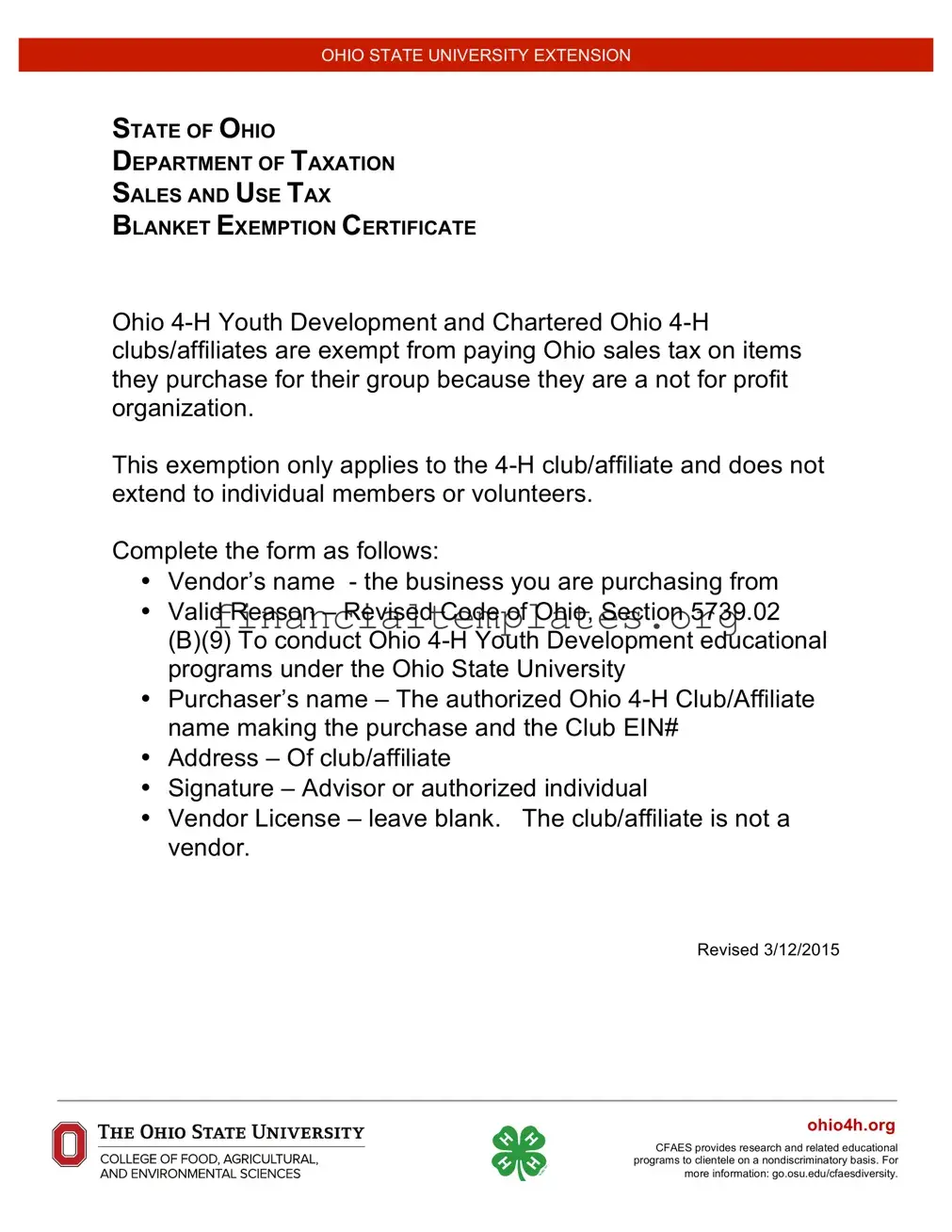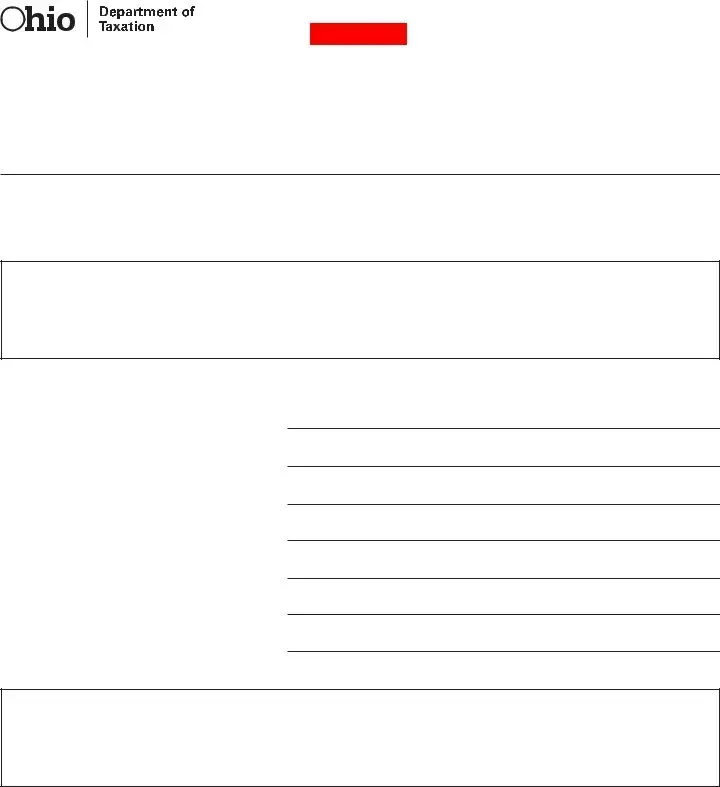OHIO STATE UNIVERSITY EXTENSION
STATE OF OHIO
DEPARTMENT OF TAXATION
SALES AND USE TAX
BLANKET EXEMPTION CERTIFICATE
Ohio 4-H Youth Development and Chartered Ohio 4-H clubs/affiliates are exempt from paying Ohio sales tax on items they purchase for their group because they are a not for profit organization.
This exemption only applies to the 4-H club/affiliate and does not extend to individual members or volunteers.
Complete the form as follows:
•Vendor’s name - the business you are purchasing from
•Valid Reason – Revised Code of Ohio, Section 5739.02 (B)(9) To conduct Ohio 4-H Youth Development educational programs under the Ohio State University
•Purchaser’s name – The authorized Ohio 4-H Club/Affiliate name making the purchase and the Club EIN#
•Address – Of club/affiliate
•Signature – Advisor or authorized individual
•Vendor License – leave blank. The club/affiliate is not a vendor.
Revised 3/12/2015
ohio4h.org
CFAES provides research and related educational programs to clientele on a nondiscriminatory basis. For more information: go.osu.edu/cfaesdiversity.
STEC B
Rev. 3/15
Reset Form
tax.ohio.gov
Sales and Use Tax
Blanket Exemption Certificate
The purchaser hereby claims exception or exemption on all purchases of tangible personal property and selected services made under this certificate from:
(Vendor’s name)
and certifies that the claim is based upon the purchaser’s proposed use of the items or services, the activity of the purchase, or both, as shown hereon:
ASD
Purchaser must state a valid reason for claiming exception or exemption.
D
Purchaser’s name
ASD
Purchaser’s type of business
ASDSAD
Street address
City, state, ZIP code
Date signed
ASD
Vendor’s license number, if any
Vendors of motor vehicles, titled watercraft and titled outboard motors may use this certificate to purchase these items under the “resale” exception. Otherwise, purchaser must comply with either rule 5703-9-10 or 5703-9-25 of the Admin- istrative Code.This certificate cannot be used by construction contractors to purchase material for incorporation into real property under an exempt construction contract. Construction contractors must comply with rule 5703-9-14 of the Administrative Code.


